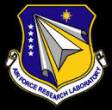AFRL posts BAA for the MINOTAUR program
 On March 11, the Air Force Research Laboratory released a broad agency announcement for the Multi-INt Operations Technologies And Unification Research (MINOTAUR) program (BAA NUMBER: BAA-AFRL-RIK-2016-0007). For an award in FY16, the agency recommends that white papers be received by April 29, 2016.
On March 11, the Air Force Research Laboratory released a broad agency announcement for the Multi-INt Operations Technologies And Unification Research (MINOTAUR) program (BAA NUMBER: BAA-AFRL-RIK-2016-0007). For an award in FY16, the agency recommends that white papers be received by April 29, 2016.
The Air Force Research Laboratory, Information Directorate (AFRL/RI) is soliciting white papers under this broad agency announcement (BAA) for research, design, development, test, evaluation and experimentation of innovative technologies and techniques for Multi-INt Operations Technologies and Unification Research (MINOTAUR).
The objective of the BAA is to incrementally deliver a suite of tools and technologies to enhance Open Architecture Intelligence Information Systems from the sensor through the analyst, chain of command, and out to the operational units. This effort will research, develop, test, and evaluate new methods for integrating multiple intelligence sources and improving the fusion, processing and exploitation of raw source data from the battlefield to actionable mission criteria through assured and adaptable technologies. These tools and technologies will be able to securely share information and integrate new sensors and sources of data. Additionally, this effort is intended to advance baseline performance beyond what is currently operational or fielded.
Research efforts under this program are expected to result in next generation tools and technologies, which incrementally deliver a suite of Command, Control, Communications, Computers, Intelligence, Surveillance and Reconnaissance (C4ISR) capabilities. These capabilities will provide a myriad of decisive advantages such as: 1) Integration/modernization of intelligence based Open Architectures, 2) Integrate new sensors and sources of data into the enterprise in rapid and agile fashion, 3) Develop tools and technologies for fusion, processing and exploitation of raw intelligence, and 4) Speedy access to intelligence products based on mission need. The effectiveness of this research and development will be assessed through testing and evaluation activities. Technology innovations that deliver new or improved operational capabilities are of high interest. Offerors are encouraged to describe the pre-conditions that are necessary for the proposed techniques to work effectively.
Work is encouraged in, but not limited to, these focus areas:
1. Integration/modernization of intelligence based Open Architectures.
• Securely integrate multiple intelligence sources for the purpose of increasing intelligence analyst’s situational and contextual awareness.
• Securely consolidate and integrate enterprise workstations and communication systems within both physical and logical architectures.
• Modernize existing data, software, communication, and hardware architectures and solutions to meet evolving CONOPS. Integrate these solutions into the Open Architecture adhering to open standards and methods.2. Integrate new sensors and sources of data into the enterprise in rapid and agile fashion.
• Enable integration with sensors and data sources of various formats and protocols into the architecture for further processing and exploitation.
• Develop methods for processing data and information from multiple sensor feeds or intelligence types.
• Demonstrate, test, and measure improved performance of intelligence data sources.3. Develop tools and technologies for fusion, processing and exploitation of raw intelligence.
• Provide an architecture/framework to easily integrate data consumers into the enterprise.
• Use techniques to perform topic modeling of intelligence data and develop methods of associating disparate types of data.
• Develop methods for omnidirectional association among intelligence data sources and summarize these associations in order to provide analysts contextual information and assist in streamlining data fusion.
• Design and develop processing and exploitation tools into the architecture enabling standard formats, protocols on a platform for growth, agile development and rapid deployments.4. Speedy access to intelligence products based on mission need.
• Develop an improved Graphic User Interface (GUI) that incorporates methods of suggesting highly relevant data sources to assist in analyst search, correlation, and compilation.
• Generate recommendations surrounding intelligence sources to aid in identifying situations and information that cannot be found in current data archives available to the intelligence analyst.
• Develop information management techniques to enable strategic prioritization of intelligence data, maximizing effectiveness of an analyst when overwhelmed with available information.
• Develop automated archiving methods and techniques of intelligence data designed for continuous operations. Include real-time adaptability mechanisms for associating information sources and priority data.
Full information is available here.
Source: FedBizOpps








